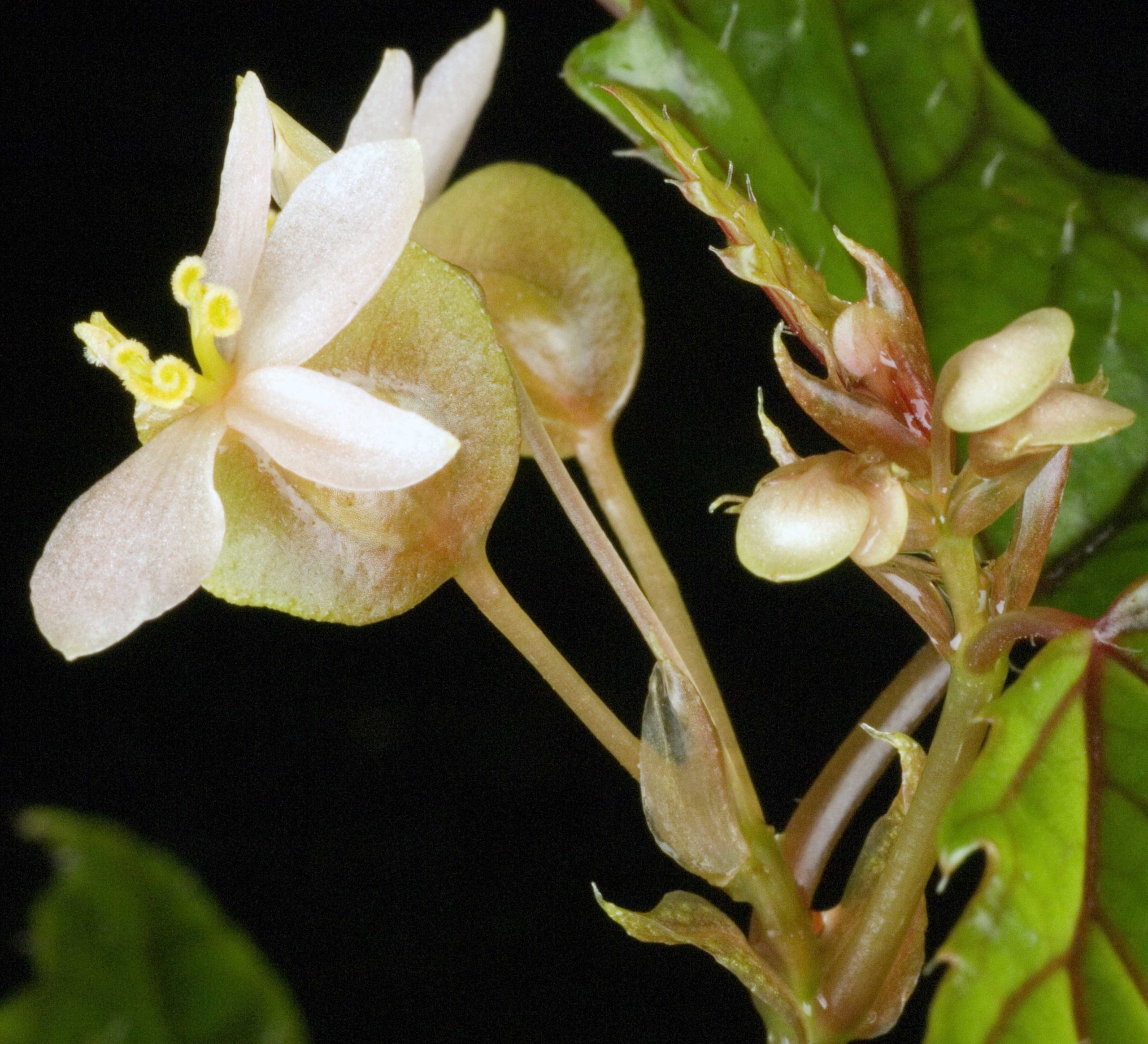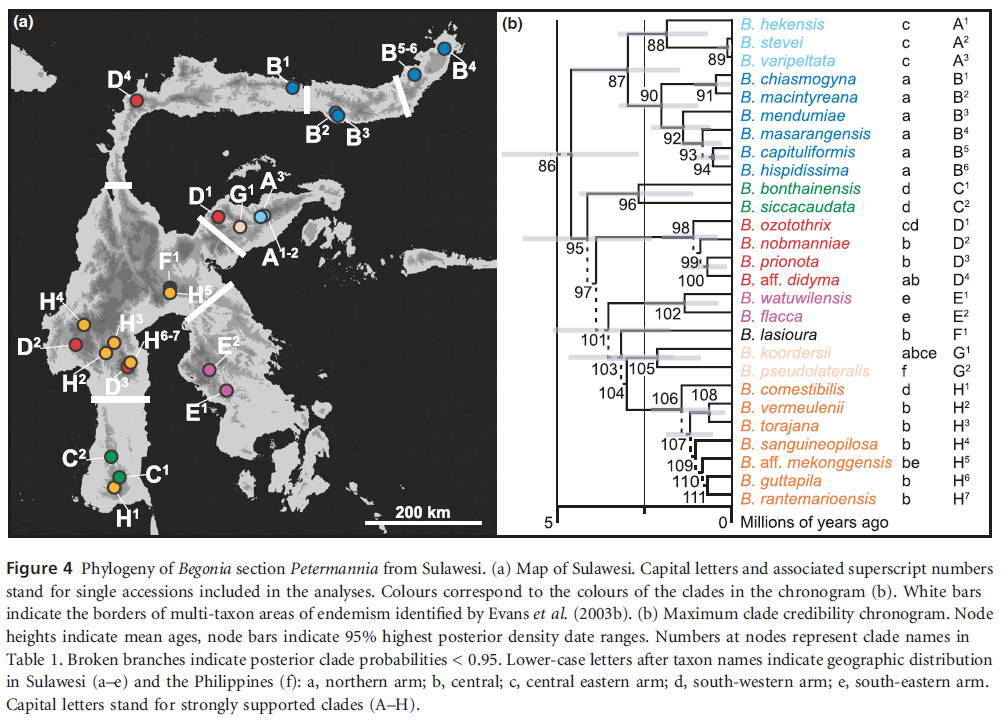Begonia stevei in Edinburgh J. Bot. 63(2-3): 197. 2006
Primary tabs

Diagnosis
- Ab omnibus aliis speciebus Begoniae celebicis foliis pinnatim incisis distincta. - Type: Sulawesi, Luwuk District, Bunta Sub district, Sumber Agung, Gunung Hek, Sungai Hek, evergreen forest, 660 m, 25 ii 2004, Hendrian, M.F. Newman, S. Scott, M. Nazre Saleh & D. Supriadi 877 (holo E; iso L). (Four new species of Begonia (Begoniaceae) from Sulawesi. Edinburgh J. Bot. 63.: 191-199. 2006.)
Description
- Sprawling herb to c.60 cm high.
Stem woody at base, c.7 mm across with scattered hairs, striate when dry, internodes 4-8 cm.
Stipules lanceolate, 10-15 × c.6 mm with a filiform extension at the tip, glabrous or slightly hairy. Petioles 1-4 cm long sometimes with scattered hairs. Leaves asymmetric, up to 13 cm long from base to tip and up to 6 cm wide, midrib 5-10.5 cm, lanceolate but with an irregularly incised outline, venation palmate-pinnate, scattered with colourless hairs on the upper and lower surface, sub-cordate to cordate at the base.
Inflorescence usually bisexual, female flowers sometimes borne separately, terminal or axillary, protogynous; bracts lanceolate, 7 mm long, semi-persistent.
Male flowers borne distally to the female in monochasial cymes usually comprising c.30 flowers; tepals 2, orbicular, c.5 mm in diameter, glabrous, pale green or white or coral pink; stamens c.20, pale yellow to orange, anthers c.0.75 mm long, dehiscing through slits more than half as long as the anther, filaments the same length or shorter, slightly fused at the base.
Female flowers borne in pairs at the base of the inflorescence; pedicels c.12 mm long; tepals 5, sub-oval, sub-equal (outer 2 slightly larger), c.8 × 5 mm, pale green or white or coral pink; styles 3, once spirally twisted, pale yellow, deciduous; ovary with 3 equal wings, pale green or pink, truncate across the apex, placentation axillary, placentae bifid, wings rounded at the base and at the tip.
Fruit c.18 × 14 mm, drying pale brown, dehiscent, capsule oval. Seeds barrel shaped, c.0.3 mm long, collar cells c.2/3 the length of the seed. (Four new species of Begonia (Begoniaceae) from Sulawesi. Edinburgh J. Bot. 63.: 191-199. 2006.)
Distribution
Asia-Tropical: Sulawesi (Sulawesi endemic)
Endemic to Indonesia, Sulawesi, Central Sulawesi.
See specimen tab for map of point distribution data of georeferenced specimens.
See specimen tab for map of point distribution data of georeferenced specimens.
Etymology
- The epithet is after one of the collectors, Steve Scott, who has also provided the cultivated material for the four species in this account.
Notes
- Several individuals of this species sown from a single seed collection were grown to maturity, and exhibited considerable variation in leaf incision and indumentum. This was matched in flower colour variation, ranging from palest green with pale yellow anthers to coral orange-pink with orange anthers. Whilst male flowers were produced abundantly in the cultivated specimens, female flowers were rare. (Four new species of Begonia (Begoniaceae) from Sulawesi. Edinburgh J. Bot. 63.: 191-199. 2006.)
Molecular Systematics
- GenBank
- see Thomas et al., 2012 (Thomas, D.C., Hughes, M., Phutthai, T., Ardi, W.H., Rajbhandary, S., Rubite, R., Twyford, A.D. & Richardson, J.E. 2012: West to east dispersal and subsequent rapid diversification of the mega-diverse genus Begonia (Begoniaceae) in the Malesian archipelago. – Journal of Biogeography 39: 98-113)
 |


